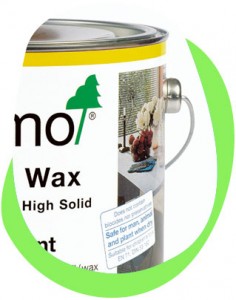 Paint is such a ubiquitous and essential DIY product, so invaluable for so many projects, that it is unnerving to discover the hazards associated with it. Fortunately there are a growing number of suppliers of paints which are less harmful.
Paint is such a ubiquitous and essential DIY product, so invaluable for so many projects, that it is unnerving to discover the hazards associated with it. Fortunately there are a growing number of suppliers of paints which are less harmful.
Hazards
Your health: Painting and decorating is so hazardous that it has been described as a “carcinogenic profession” (1989 World Health Organisation figures). DIY-ers are exposed to the same risks, albeit at a lower level.
The environment: Manufacturing paint consumes a lot of energy, and conventionally produces up to ten tonnes of waste, much of it toxic, for every tonne of paint – and that’s before you consider how toxic the paint itself can be!
- One major hazard is VOCs – Volatile Organic Compounds. These evaporate, causing eye, nose, and throat problems, and headaches, and contributing to the formation of ground-level ozone. They include known carcinogens such as toluene and xylene. Most paints now carry VOC ratings – this is a voluntary move by paint manufacturers to show that they are beginning to behave in a more responsible manner.
- On the face of it, it’s best to go for the lowest possible VOC rating: unfortunately, some of the water-based paints designed to be low in VOCs actually contain more of other harmful chemicals! – e.g. alkyl phenols and vinyl resins (see below).
- Alkyl phenols are hormone disrupters, which accumulate both in the human body and in the environment.
- Vinyl resins are carcinogenic skin irritants, which can also cause lung, liver and blood damage.
- Titanium dioxide is often used for improved whiteness or opacity. The amount of energy used to manufacture it is an environmental concern, though it is harmless to use and supplies are plentiful.
Alternatives
- There are a number of ‘eco’ or ‘natural’ paint manufacturers. They aim to use natural, biodegradable ingredients which are harmless both to us and to our environment. Several manufacturers are listed under ‘DIY suppliers‘ and many of the green building suppliers will advise on and sell paint.
- It’s worth asking for a list of ingredients. Some ‘natural’ paints still contain synthetic alkyds, white spirit (‘aliphatic hydrocarbons’ – a petroleum product), vinyl resins, and titanium oxide, which you may or may not be happy to use.
- Other ingredients – such as linseed oil and orange peel – make them sound good enough to eat, and users report that the paints either don’t smell at all, or that they smell gorgeous.
- Not all VOCs are artificial toxins – they include alcohol and citrus oils – so VOC ratings, while helpful, do not tell the whole story.
- Manufacturers of natural paint claim that reduced processing means less waste, less energy used, and less pollution. Auro‘s literature proudly claims that both their production residues and any surplus product ‘can be turned into plant-friendly compost’.
- Natural paints can cost more than mass-produced petrochemical alternatives. With small production volumes and high ideals this is hardly surprising: the direct cost to you may be greater, but the hidden costs to your health and to the wider world will be much less. And they have a reputation for being a real pleasure both to use and to live with.
- If you can’t find a natural paint that you can afford, the guilt-free alternative is to use up cast offs that would otherwise go to waste.
- At the very least, try to make sure that any spare paint reaches someone who needs it.
Recycled Paint
Recycled paint is paint which has been remanufactured to return the paint to its original high quality. The process not only saves paint going to landfill (currently 2 tonnes a week), but also the pots the paint arrives in (both plastic and steel) gets sent for recycling so the waste output is vertually zero. It is only water-based emulsion, so it is very low VOC and therefore have no health implications. Newlife Paints produce recycled paint and it is available to purchase online or in certain B&Q stores.
Disposal of paint
Contact your local authority for advice on disposal of paint and other toxic DIY waste.
In some areas, old paint can be recycled via the Community RePaint scheme, which redistributes leftover reusable paint to community groups and projects.